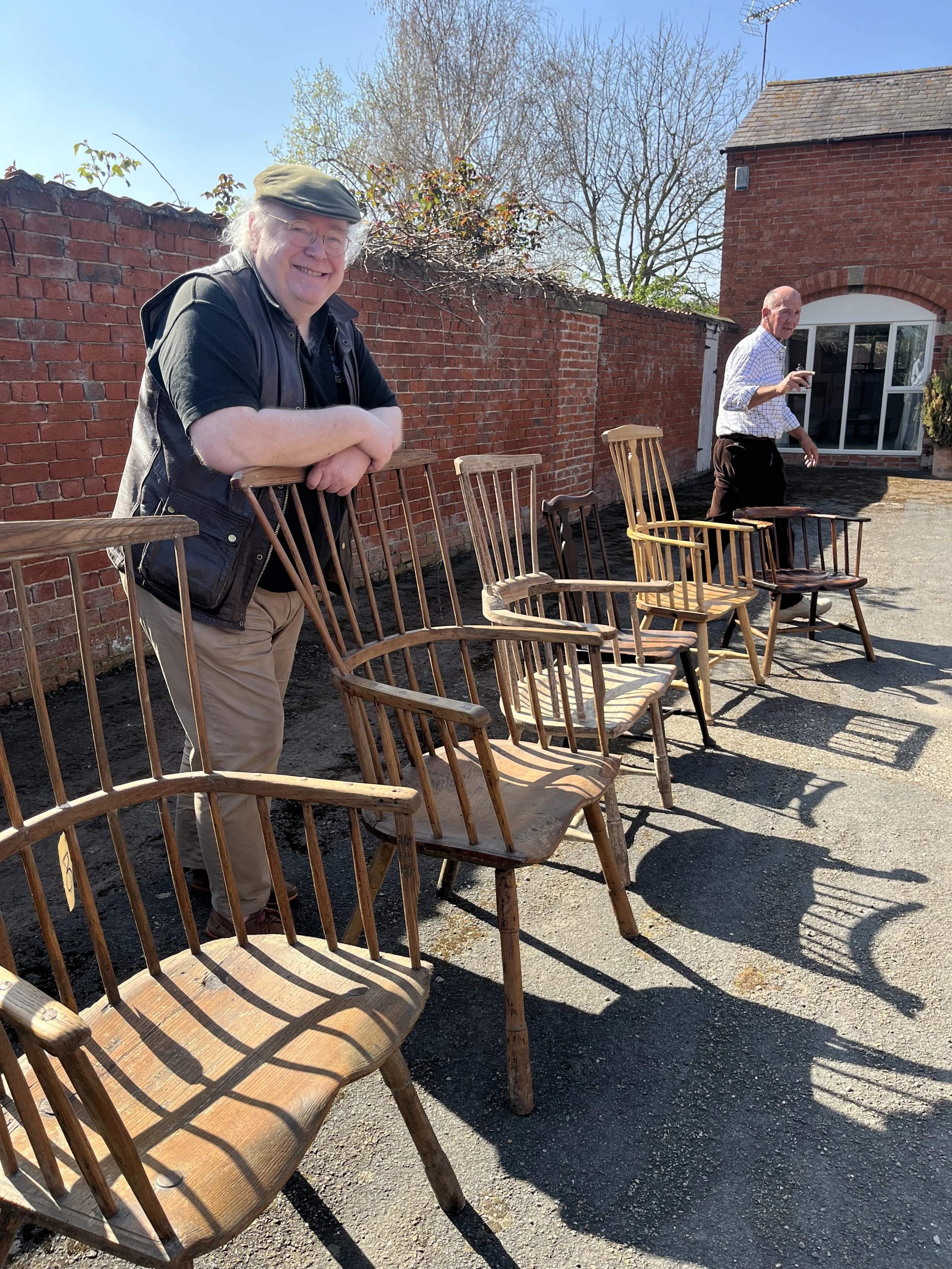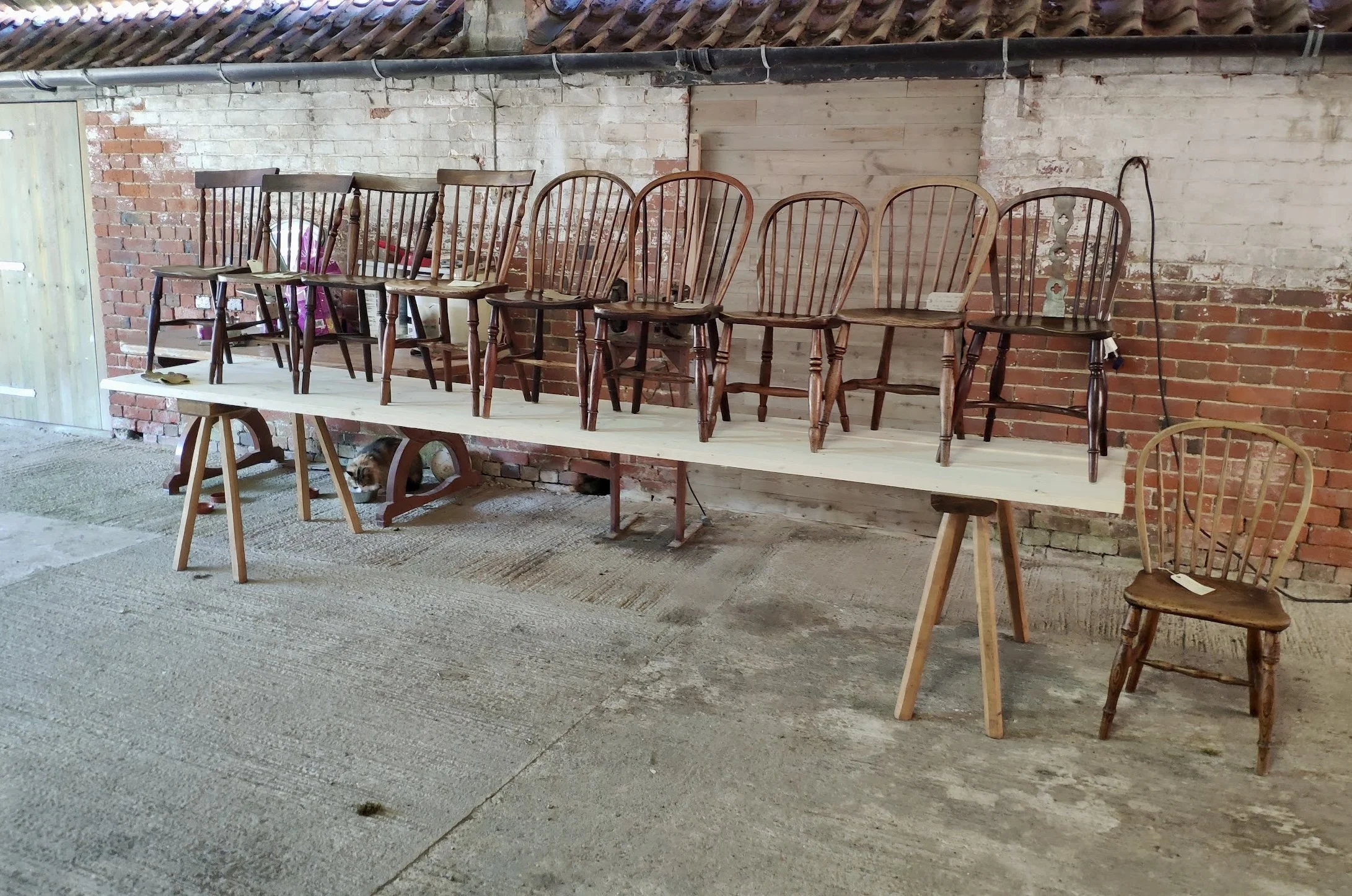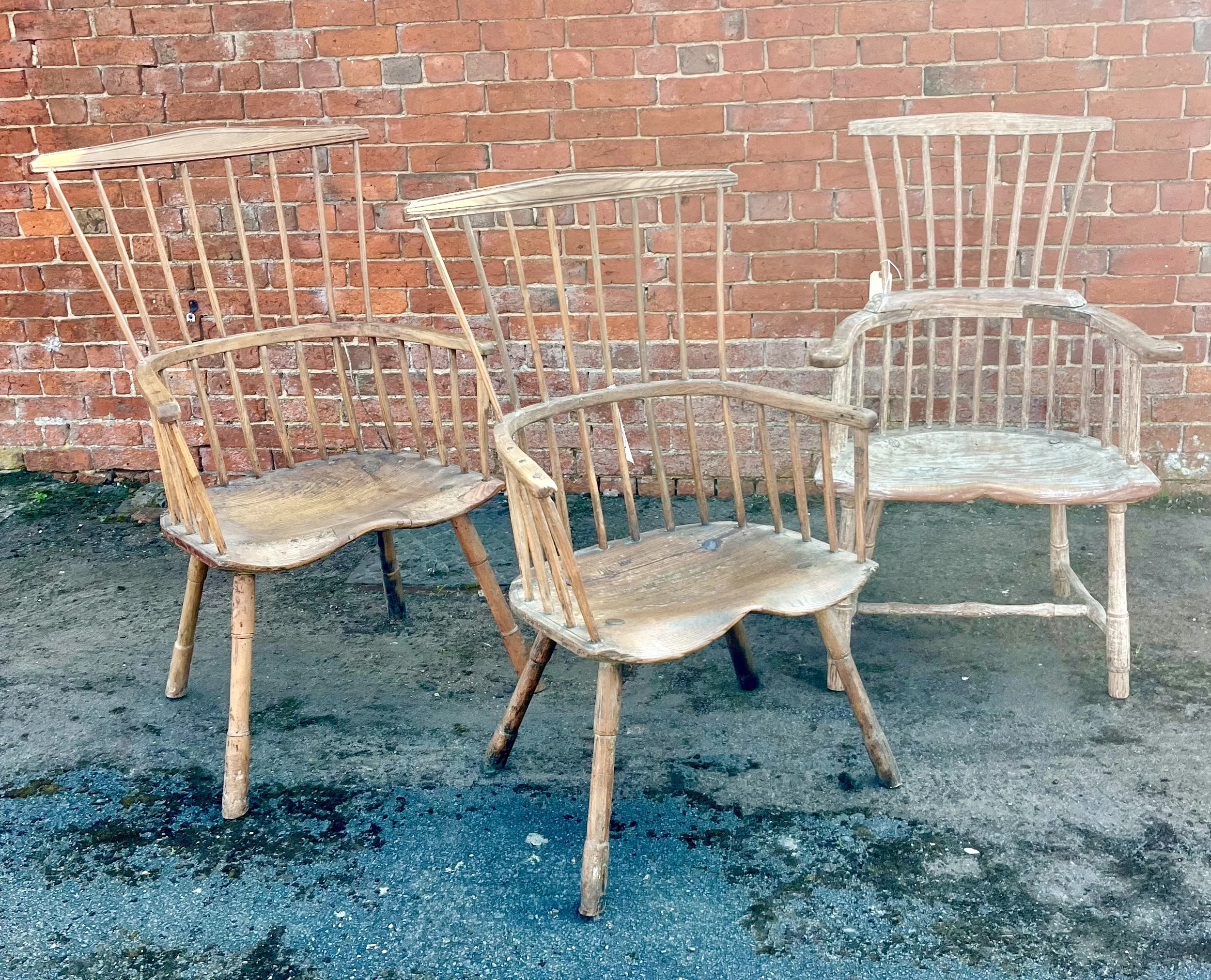Chair Fancier’s Fair
Julian Parker with some outstanding early Windsors and our host, William Sergeant.
Last September I attended a celebratory reception at London’s Museum of the Home in honour of Bill and Gerry Cotton. Their work in identifying the distinct regional styles and makers of vernacular furniture lead to the most important book on chairmaking that I own - “The English Regional Chair”, published in 1990. I was delighted at the opportunity to meet the great man himself, and having my personal copy signed felt a bit like asking Moses to sign the ten commandments. The reception was one of those events that I wished could carry on late into the evening, such were the interesting conversations amongst familiar faces and furniture enthusiasts.
I’d hoped to continue a particular line of thought with a fellow member of the Regional Furniture Society, William Sergeant. Much of my brief history of Windsor chairs on this website relies on William’s research into chairmaking in Lincolnshire. As luck would have it, a few months on from the event in London I found myself having an animated conversation with William about early Windsors. He was calling from the Canary Islands while I was sat in the queue for the auto carwash. Modern technology. We began to hatch a plan for a visit to his collection…
So it was that I found myself staring out of the window of a train the following April. Miles of flat farmland punctuated by tall church spires, the sunny prosperity of England spread out like a Constable painting.
A Selection of Lincolnshire Windsors (spot the well-fed farm cat!).
William met me at Newark station and we drove a few miles to what had previously been his family’s farm - he’s downsized to the local village but very sensibly kept some outbuildings. You can never have too many outbuildings. Immediately on arrival we plunged into the world of Lincolnshire Windsor (and rush seated) chairs. William had assembled not only a selection of chairs from his own collection but a group of fellow enthusiasts and experts, some of whom brought their own chairs for inspection and discussion. A freewheeling and fascinating conversation amongst the group began, including the use of different timbers in local chairmaking and how Windsors might have been transported from maker to market - by road or canal?
Perhaps the highlight of the afternoon, aside from a delicious lunch organised by William’s wife Claire, was a presentation by Julian Parker. Julian explained the research undertaken between himself and William into a very distinct type of early Windsor. These comb-backed chairs are remarkably comfortable owing to their generous proportions. The seat is made from a thick slab of ash and is carved with an unusual inverted “v” on the underside. They bear a strong resemblance to chairs used outdoors in 18th century portrait paintings and seem to be local to Lincolnshire.
Early Windsors, perhaps for outdoor use.
William was also kind enough to set up a makeshift studio so that I could photograph some of the highlights of his collection. This is so important for developing my work; the ability to focus on the detail of a crest rail or how a seat has been carved. It’s not something you can pick up from a book or online photographs, and I’m very grateful for the opportunity.
A Chair or Two, Lincolnshire
It’s also a relief to know that I’m not alone in my obsessions. There’s an underground network of regional furniture enthusiasts. You could be sat opposite one on the train home and you wouldn’t know it…
Next episode, I continue making a chair. Honest.
If you enjoyed this post, why not subscribe?




